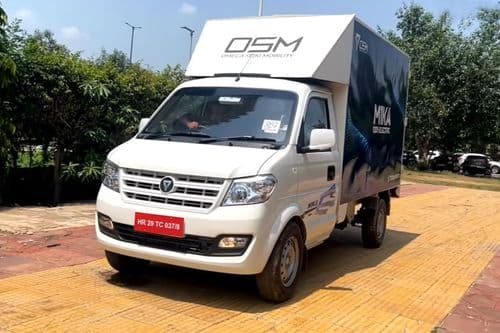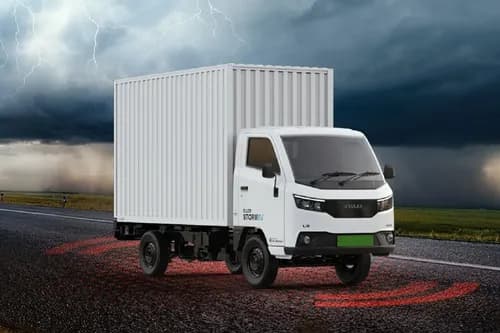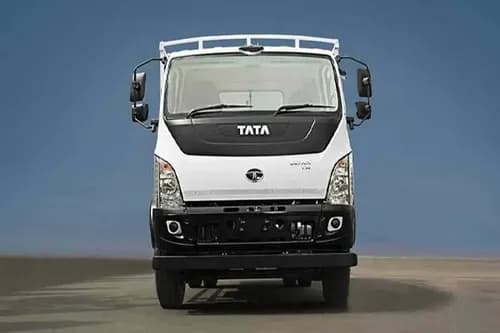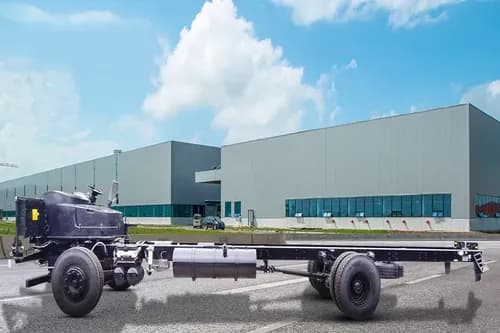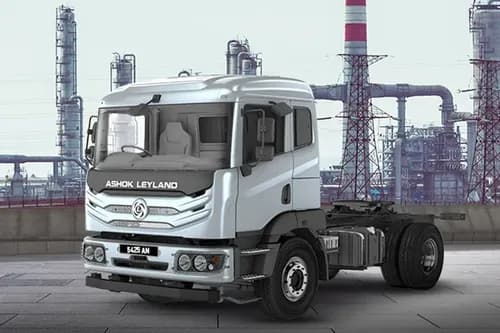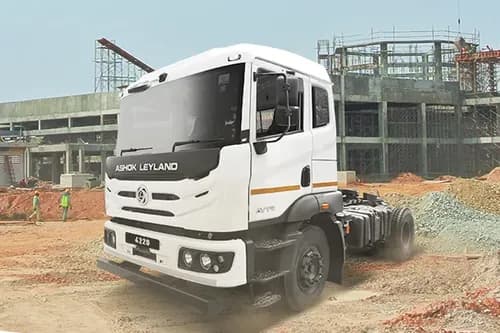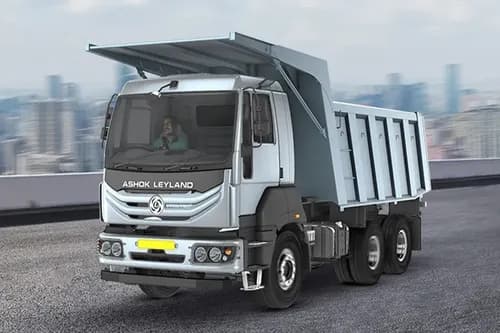Ad
Ad
Ad
National Mission for Sustainable Agriculture: Objectives, Strategies, and Benefits Explained
Indian agriculture plays a crucial role in providing food to the nation and is responsible for covering approximately 51% of the net sown area in the country. This agricultural sector is predominantly rainfed and is, therefore, vulnerable to the effects of climate change, which can significantly impact its productivity.

To address the growing demand for food in the country and the need to sustain agricultural productivity, there is a pressing need to focus on resource conservation, climate change mitigation, and sustainability. Developing rainfed agriculture is one of the key strategies to achieve this objective.
For this reason, the Government of India launched the National Mission for Sustainable Agriculture (NMSA) in 2014-15. The aim of this mission is to promote sustainable agricultural practices that help in enhancing productivity, soil health, and water management. It also focuses on building the resilience of farmers to cope with the effects of climate change and to ensure that they can sustainably meet the food demand of the country. The NMSA is a significant step towards ensuring food security for the country's growing population while also promoting sustainable agricultural practices.
National Mission for Sustainable Agriculture (NMSA) - Introduction
The National Mission for Sustainable Agriculture (NMSA) is a key component of the National Action Plan on Climate Change (NAPCC) in India. It is one of eight missions that aim to address the impacts of climate change in the country. The NMSA specifically focuses on enhancing agricultural productivity, particularly in rainfed areas, through integrated farming, efficient water usage, and soil health management. It also seeks to improve the sustainability, income, and resilience of the agricultural sector in the face of climate change.

The mission has a broad mandate to increase agricultural output, sustainability, and climate resilience. It aims to completely reform agricultural methods to meet the goals of the Nationally Determined Contributions (NDCs) and promote sustainable agricultural practices. By adopting such practices, the NMSA aims to enhance the productivity and income of farmers, conserve natural resources, and ensure food security for the growing population of India.
Objectives of the National Mission for Sustainable Agriculture (NMSA)
The objectives of the National Mission for Sustainable Agriculture (NMSA) are as follows:
-
Increase the capacity of farmers and other stakeholders in climate change adaptation and mitigation strategies, in conjunction with other ongoing Missions like the National Mission on Agriculture Extension & Technology, National Food Security Mission, National Initiative for Climate Resilient Agriculture (NICRA), etc.
-
Develop location-specific Integrated Farming Systems to increase agriculture's productivity, sustainability, profitability, and resiliency to climate change.
-
Increase coverage to achieve “more crop per drop,” while also maximizing the use of water resources.
-
Protect natural resources by taking suitable measures to protect soil and moisture.
-
Adopt complete soil health management strategies based on soil fertility maps, applying macronutrients and micronutrients.
-
Implement models for increasing the productivity of rainfed farming by mainstreaming rainfed technologies developed through NICRA.
-
Increase the productivity of rainfed farming areas by utilizing funding from other programs/missions like the Mahatma Gandhi National Rural Employment Guarantee Scheme (MGNREGS), the Integrated Watershed Management Programme (IWMP), the RKVY, etc.
-
Develop efficient departmental and ministerial coordination to carry out the National Mission for Sustainable Agriculture's objectives within the auspices of the National Action Plan on Climate Change (NAPCC).

Components of National Mission for Sustainable Agriculture (NMSA)
The National Mission for Sustainable Agriculture (NMSA) has four main components:
-
On-Farm Water Management (OFWM): The goal of OFWM is to encourage the use of cutting-edge on-farm water conservation tools and technology to use water as efficiently as possible. This is done by effectively managing and harvesting rainwater. Farm ponds are created with funding from the Mahatma Gandhi National Rural Employment Guarantee Act (MGNREGA) mission to promote water conservation on the farm.
-
Rainfed Area Development (RAD): RAD creates a region-based strategy for the improvement and preservation of farming practices and natural resources. It combines several different components of agriculture, including horticulture, forestry, livestock, fisheries, and other agro-based activities that will serve as a source of income. Under RAD, different strategies will be implemented to control soil nutrients based on the development of agricultural lands and the soil health card.
-
Soil Health Management (SHM): SHM promotes location-specific sustainable soil health management through the creation and linking of soil fertility maps with macro-micro nutrient management, appropriate land use based on land capability, prudent fertilizer application, and minimizing soil erosion/degradation. This includes residue management, organic farming practices, and more.
-
Climate Change and Sustainable Agriculture: Monitoring, Modeling, and Networking (CCSAMMN): CCSAMMN pilots climate change adaptation/mitigation research/model projects in the area of climate-smart sustainable management practices and integrated farming systems suitable to local agro-climatic conditions. It provides bidirectional dissemination of information and knowledge related to climate change between farmers, research/scientific establishments, and vice versa.
These components aim to increase agricultural productivity, sustainability, income, and resilience to climate change while protecting natural resources.
Strategies of National Mission for Sustainable Agriculture (NMSA)
The National Mission for Sustainable Agriculture (NMSA) has several strategies that are intended to achieve its objectives. Some of these strategies are:
-
Integrated Nutrient Management Techniques: The NMSA will focus on encouraging integrated nutrient management practices that are specific to the site and crop, which can improve soil health, increase agricultural yield, and maintain the quality of land and water resources.
-
Integrated Agricultural System: The NMSA will pursue activities such as horticulture, livestock, fishery, agroforestry, and value addition alongside cropping systems to create an integrated agricultural system.
-
Management of Water Resources: The NMSA plans to concentrate on efficient management of the water resources that are already accessible and increasing water usage efficiency to ensure that water is used as efficiently as possible.
-
Agronomic Techniques: The NMSA intends to promote better agronomic techniques for higher farm productivity, such as improved soil treatment, increased water holding capacity, prudent chemical usage, and improved soil carbon storage.
-
Database: The National Soil Survey Agency (NMSA) aims to build a database on soil resources through land use survey, soil profile study, and soil analysis on GIS (Geographic Information System) platform. This database will promote the adoption of site and soil-specific crop management practices.
-
Technology Adoption: The NMSA attempts to accomplish its goals through promoting resource conservation technology and introducing methods that would aid in disaster mitigation during extreme climatic occurrences, such as protracted dry spells, floods, etc.
-
Interventions: The NMSA aims to embrace and spread rainfed technologies that have a wider reach in underserved areas. It is planned to be accomplished by coordinating investments from other programs like MGNREGS, National Food Security Mission, National Mission for Agricultural Extension & Technology, etc., and leveraging those investments.
-
Professional Involvement: The NMSA will work with academic institutions and industry experts to create climate change adaptation and mitigation techniques for particular agro-climatic settings and to promote these strategies through suitable agricultural systems.

Regulations for the implementation of National Mission for Sustainable Agriculture (NMSA)
- The Ministry of Environment and Forests has made recommendations to simplify regulations for harvesting and moving agroforestry species under the National Mission for Sustainable Agriculture (NMSA).
- The financial resources of the NMSA will be distributed and utilized according to the regulatory framework of the Compensatory Afforestation Fund Management and Planning Authority (CAMPA).
- A National Agroforestry Policy was created in 2014 to develop a comprehensive agriculture strategy and encourage state-level agroforestry practices.
Sub-Mission on Agro-Forestry (SMAF) under National Mission for Sustainable Agriculture (NMSA)
The Sub-Mission on Agro-Forestry (SMAF) scheme is an initiative implemented under the National Mission for Sustainable Agriculture (NMSA) since 2016-17. The scheme aims to encourage farmers to grow multi-purpose trees alongside agricultural crops to improve feedstock, the wood-based and herbal industries, and increase climate resilience.
Currently, SMAF is being implemented in 20 states and 2 union territories. The primary objective of this scheme is to promote agroforestry practices for increased crop production and economic benefits. The scheme is only available in states that have relaxed their transit laws to allow the shipment of lumber, and it will be expanded to other states as they notify others of the relaxation. The use of indigenous species or tree species with therapeutic benefits is encouraged under this scheme.
The Sub-Mission on Agroforestry will be administered under the NMSA, with funding allocated in a 60:40 ratio between the Government of India and the state government for all states except for eight states in the Northeast region and the hilly states of Himachal Pradesh, Uttarakhand, and Jammu & Kashmir, where the fund sharing ratio would be 90:10. Farmers will receive financial assistance equivalent to half of the actual cost of the initiatives.
Some of the key features of the SMAF scheme are:
- Encouragement of farmers to adopt agroforestry practices.
- Promotion of multi-purpose trees cultivation alongside agricultural crops.
- Use of indigenous species or tree species with therapeutic benefits.
- Financial assistance to farmers equivalent to half of the actual cost of the initiatives.
- Availability of funding in a 60:40 or 90:10 ratio between the Government of India and the state government.
- Implementation of the scheme in states that have relaxed their transit laws to allow the shipment of lumber.
Overall, the SMAF scheme aims to promote sustainable agriculture practices and increase farmers' income through agroforestry practices. The scheme's implementation in various states will help in increasing the productivity of agricultural land and the overall economic growth of the country.
Who is eligible to avail benefits from National Mission for Sustainable Agriculture?
The National Mission for Sustainable Agriculture (NMSA) provides benefits and support to various stakeholders involved in agriculture, including farmers, agricultural entrepreneurs, agribusinesses, agricultural research and extension organizations, NGOs, and state governments. The mission aims to promote sustainable agriculture practices and support the development of value chains for agriculture, horticulture, livestock, fisheries, and other allied sectors. However, the specific eligibility criteria for availing benefits from NMSA may vary depending on the scheme or sub-mission being implemented under the mission. Interested individuals or organizations are advised to check the specific guidelines and eligibility criteria for the relevant scheme or sub-mission under NMSA.
What are some general guidelines for National Mission for Sustainable Agriculture?
Here are some general guidelines for National Mission for Sustainable Agriculture:
-
Focus on sustainable agriculture: The mission is primarily focused on promoting sustainable agricultural practices and improving the overall health of agricultural ecosystems.
-
Integration of different agricultural components: The mission integrates various components of agriculture such as horticulture, livestock, fisheries, agroforestry, and value addition alongside cropping systems.
-
Location-specific approach: The mission aims to promote location-specific sustainable soil health management, on-farm water management, and climate-smart sustainable management practices.
-
Efficient resource management: The mission emphasizes the efficient management of resources such as water, land, and nutrients to improve agricultural productivity while minimizing environmental damage.
-
Use of technology and innovation: The mission encourages the adoption of new technologies and innovative practices to enhance agricultural production and efficiency.
-
Involvement of farmers and stakeholders: The mission aims to involve farmers and other stakeholders in decision-making processes and the implementation of various initiatives to ensure their sustainability and effectiveness.
-
Capacity building: The mission aims to enhance the capacity of farmers, researchers, and extension workers to adopt sustainable agricultural practices.
-
Partnership with other programs: The mission collaborates with other government programs such as MGNREGS, National Food Security Mission, and National Mission for Agricultural Extension & Technology to ensure the effective implementation of sustainable agricultural practices.
In conclusion, the National Mission for Sustainable Agriculture aims to tackle pressing concerns such as "Water Use Efficiency," "Nutrient Management," and "Livelihood Diversification" by gradually implementing a sustainable development approach that integrates eco-friendly technologies, energy-efficient tools, and conservation of natural resources. The mission also aims to promote integrated farming and advance agronomic practices that are customized to specific geographical locations through improved soil health management, increased water use efficiency, crop diversification, and progressive adoption of crop-livestock farming systems.
FAQs on National Mission for Sustainable Agriculture
Here are some FAQs on National Mission for Sustainable Agriculture:
Q1. What is National Mission for Sustainable Agriculture?
Ans: National Mission for Sustainable Agriculture is a mission under the Indian government that aims to promote sustainable agricultural practices, increase the productivity and income of farmers, and address the challenges of climate change and natural resource management in agriculture.
Q2. What are the objectives of National Mission for Sustainable Agriculture?
Ans: The objectives of National Mission for Sustainable Agriculture are to promote sustainable agriculture practices, enhance agricultural productivity and income of farmers, conserve natural resources, promote climate-resilient agriculture, and support capacity building and institutional strengthening.
Q3. Who can benefit from National Mission for Sustainable Agriculture?
Ans: Farmers, farmer producer organizations, self-help groups, women, and other stakeholders involved in agriculture and allied sectors can benefit from National Mission for Sustainable Agriculture.
Q4. What are the components of National Mission for Sustainable Agriculture?
Ans: The components of National Mission for Sustainable Agriculture include On-Farm Water Management, Rainfed Area Development, Soil Health Management, Climate Change and Sustainable Agriculture, Integrated Nutrient Management Techniques, Integrated agricultural system, Management of water resources, Agronomic techniques, Database, Technology Adoption, Interventions, and Professional involvement.
Q5. What are the guidelines for National Mission for Sustainable Agriculture?
Ans: The guidelines for National Mission for Sustainable Agriculture include promoting sustainable agriculture practices, enhancing productivity and income of farmers, conserving natural resources, promoting climate-resilient agriculture, supporting capacity building and institutional strengthening, and implementing the mission in a participatory, decentralized, and coordinated manner.
Q6. How is National Mission for Sustainable Agriculture funded?
Ans: National Mission for Sustainable Agriculture is funded by the Government of India, with a share of funding from the state governments as well. The funding is distributed among the different components of the mission based on their priority and requirements.
Features & Articles
Top 5 Tata Ultra Trucks in India 2025: Price, Features And Specifications Explained
The Tata Ultra range offers modern and stylish trucks. In this article, we have listed the Top 5 Tata Ultra Trucks in India 2025 with their price, specifications and feat...
17-Feb-25 06:24 AM
Read Full NewsBest Three-Wheelers Showcased At Auto Expo 2025
If you are interested in buying three-wheelers or want to learn more about the latest features and technologies in three-wheelers, this article is for you. ...
14-Feb-25 12:36 PM
Read Full NewsDiscover Why Electric Rickshaws Are Smart Investments in India
Electric three-wheelers have become a smart choice for many businesses due to several reasons. Here’s Why Electric Rickshaws Are Smart Investments in India...
12-Feb-25 01:18 PM
Read Full NewsExcavators in India: Types, Best Models and Their Uses in Construction Sites
Explore excavator types in India, their features uses, and prices. Find the best machine for construction, mining, and infrastructure projects....
11-Feb-25 11:41 AM
Read Full NewsFASTag New Rules: Everything You Need to Know
According to the plan, the cost for a monthly pass will be Rs 3000. Additionally, commuters can opt for a lifetime pass for Rs 30,000....
11-Feb-25 09:43 AM
Read Full NewsSWITCH Mobility IeV8: The Smart Electric Commercial Vehicle
The IeV8 offers two battery options: 70 kWh and 140 kWh, which allow it to cover distances of up to 250 kilometers. ...
06-Feb-25 01:28 PM
Read Full NewsAd
Ad
Registered Office Address
Delente Technologies Pvt. Ltd.
M3M Cosmopolitan, 12th Cosmopolitan,
Golf Course Ext Rd, Sector 66, Gurugram, Haryana
pincode - 122002
Join CMV360
Receive pricing updates, buying tips & more!
Follow Us
COMMERCIAL VEHICLE BUYING BECOMES EASY AT CMV360
CMV360 - is a leading commercial vehicle marketplace. We helps consumers to Buy, Finance, Insure and Service their commercial vehicles.
We bring great transparency on pricing, information and comparison of tractors, trucks, buses and three wheelers.












